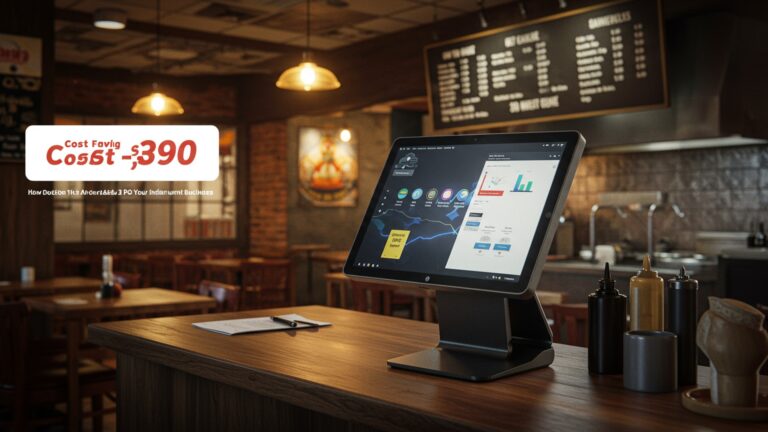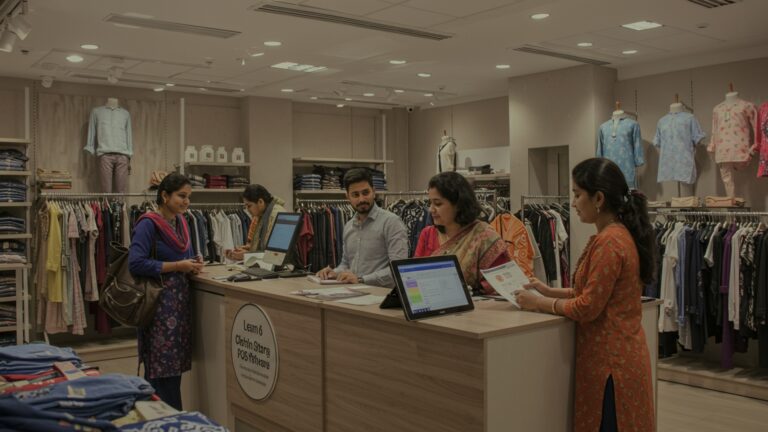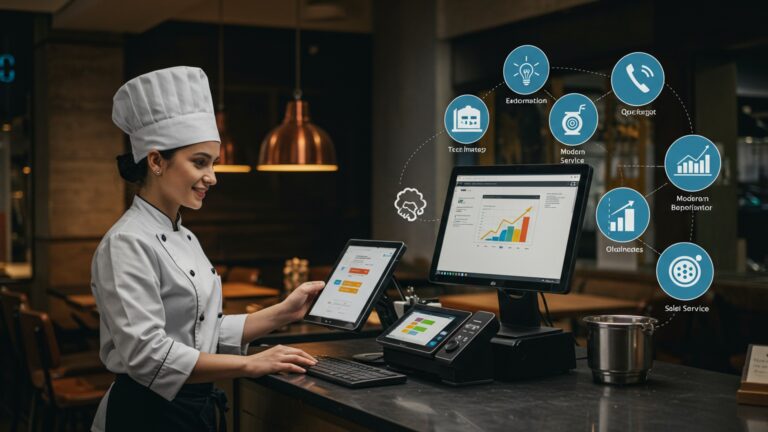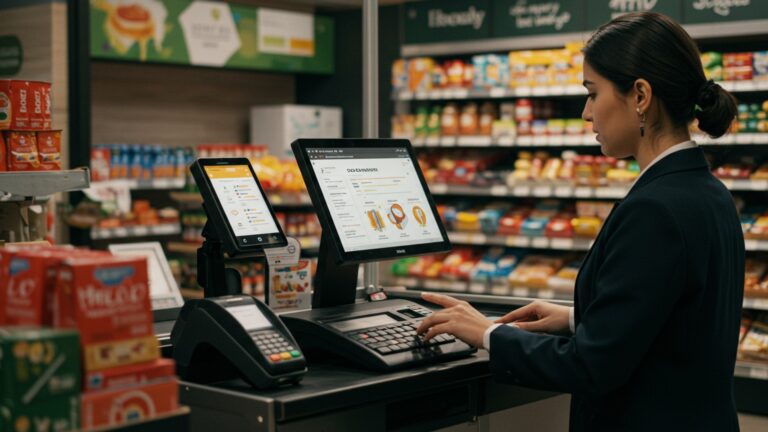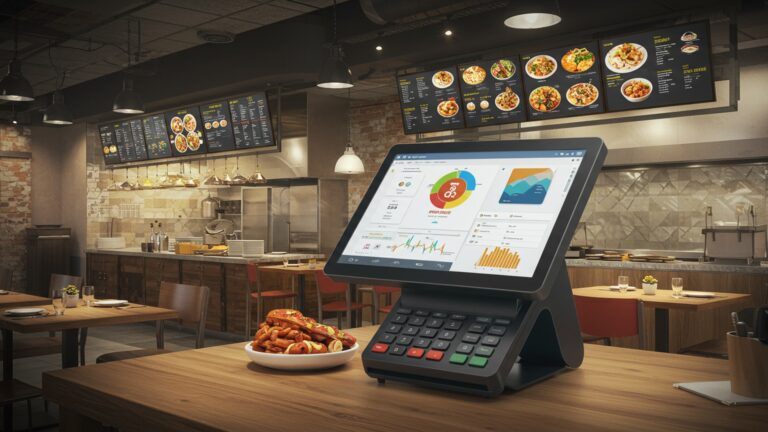7 Essential Inventory Management POS Strategies for Indian Businesses
In India’s rapidly evolving retail landscape, from bustling urban markets to expanding Tier-2 cities, mastering inventory management through an advanced POS system is paramount for sustained growth. Businesses confront unique challenges: volatile consumer demand, complex supply chains. the imperative of seamless omnichannel operations. Accurate, real-time inventory data, delivered by an integrated POS, becomes the strategic backbone, preventing costly stockouts during peak seasons like Diwali and eliminating dead stock accumulation. This proactive approach to inventory management POS in India empowers businesses to optimize cash flow, enhance customer satisfaction. capitalize on the nation’s digital commerce boom, ensuring operational agility and competitive advantage.
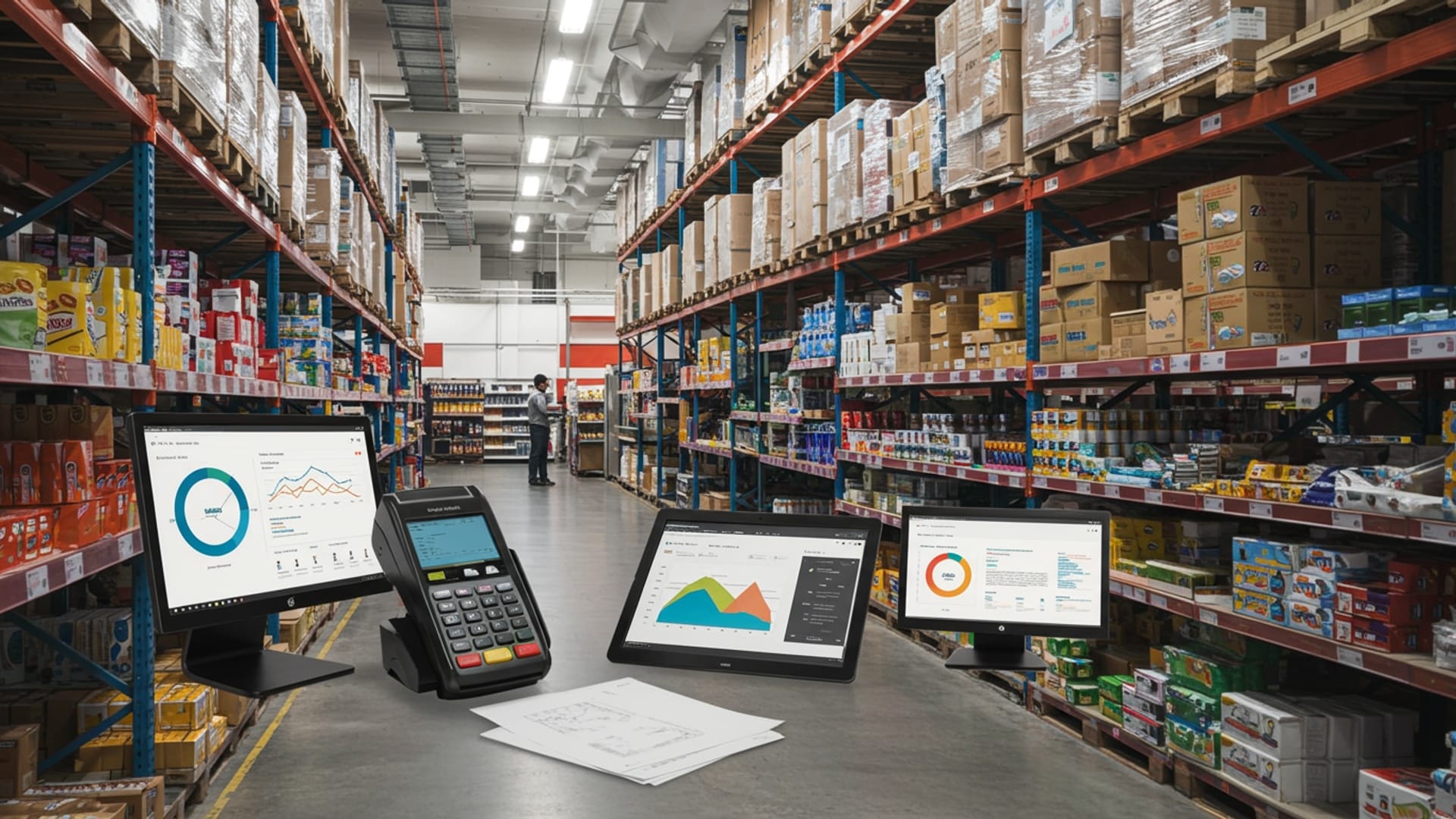
Understanding the Core: What is Inventory Management POS?
For any business, big or small, managing products efficiently is paramount. This is where the synergy of Inventory Management and Point of Sale (POS) systems becomes indispensable, particularly for the dynamic market of Indian businesses.
- Inventory Management
- Point of Sale (POS) System
At its heart, inventory management is the systematic process of ordering, storing. utilizing a company’s non-capital assets (raw materials, components. finished products). Effective management ensures you have the right products in the right quantity at the right time, minimizing costs and maximizing sales. Without proper inventory management, businesses risk either losing sales due to stockouts or incurring high carrying costs from overstocking.
A POS system is the central hub where all retail transactions are processed. Beyond just ringing up sales, modern POS systems handle customer payments, print receipts. crucially, record every sale, return. exchange. Think of it as the brain of your retail operations, capturing vital data with every customer interaction.
The true power emerges when these two systems integrate. An integrated Inventory management POS India solution means that every sale processed at the counter instantly updates your stock levels. This real-time visibility is a game-changer for businesses navigating India’s diverse consumer landscape, from bustling metropolitan markets to growing Tier 2 and Tier 3 cities. It moves beyond manual spreadsheets and guesswork, offering a data-driven approach to maintaining optimal stock.
Consider a small electronics store in Mumbai. Previously, the owner would manually check stock or week, often discovering popular items were out of stock too late, leading to lost sales. By implementing an integrated Inventory management POS India system, every smartphone sold immediately reduces the count in the system. The owner now knows precisely what’s in stock, what’s selling fast. what needs reordering, all in real-time. This immediate insight has transformed his purchasing decisions and customer satisfaction.
Strategy 1: Real-time Stock Tracking and Automated Updates
The foundation of effective inventory management lies in knowing precisely what you have, at any given moment. Real-time stock tracking, facilitated by a robust POS system, is not just a luxury but a necessity for modern Indian businesses.
When a customer makes a purchase, the POS system doesn’t just process the payment; it simultaneously deducts the sold item from your inventory count. This automated update prevents discrepancies and provides an accurate reflection of your stock levels instantly.
- Prevents Stockouts
- Avoids Overstocking
- Enhanced Accuracy
By having an accurate, up-to-the-minute view of your inventory, you can set reorder points for critical items. When an item’s stock dips below this predefined level, the system can automatically flag it or even generate a purchase order. This ensures you never run out of popular products, a common pain point for retailers during peak seasons or festivals in India.
Conversely, real-time data helps prevent over-ordering. Holding excess inventory ties up capital, incurs storage costs. increases the risk of spoilage or obsolescence. With precise data, businesses can make informed decisions, reducing wasted resources.
Manual inventory counts are prone to human error, time-consuming. often outdated by the time they’re completed. Automated updates eliminate these issues, leading to higher accuracy and operational efficiency.
This real-time capability is often powered by barcode scanning. When an item’s barcode is scanned at the POS, the system queries its database, identifies the product, processes the sale. updates the inventory count. More advanced systems might even incorporate RFID (Radio-Frequency Identification) for faster, bulk inventory checks, though barcode scanning remains the most common and cost-effective method for most Indian retailers.
// Simplified pseudo-code for a POS transaction updating inventory
function processSale(item_id, quantity_sold) { // 1. Record the sale transaction addTransactionToDatabase(item_id, quantity_sold, current_timestamp); // 2. Update inventory in real-time updateInventory(item_id, -quantity_sold); // Deduct quantity // 3. Check for reorder point current_stock = getInventoryLevel(item_id); if (current_stock <= getReorderPoint(item_id)) { generateReorderAlert(item_id); }
}
Invest in a POS system that offers robust, real-time inventory tracking. Configure minimum stock alerts for your best-selling products to automate reordering prompts and maintain consistent availability for your customers.
Strategy 2: Centralized Inventory Across Multiple Locations
For Indian businesses with more than one outlet, be it a chain of cafes or a growing retail brand expanding across cities, managing inventory across multiple locations can be a logistical nightmare without a centralized system. A modern Inventory management POS India solution addresses this challenge head-on.
A centralized inventory system allows a business owner or manager to view and manage stock levels for all their stores from a single dashboard. This means you can see how many units of a specific product are available in your Delhi store, your Bangalore outlet. your Chennai branch, all at once.
- Consistent Stock Levels
- Efficient Stock Transfers
- Holistic Business View
Prevents one store from being overstocked while another suffers from stockouts. You can easily identify where surplus stock lies and transfer it to a store with higher demand, rather than placing a new order.
When a customer is looking for a specific item that’s out of stock in one store, the POS can instantly tell the associate if it’s available at a nearby branch. This improves customer satisfaction and helps liquidate stock efficiently.
Provides a comprehensive overview of your entire inventory ecosystem, enabling better strategic decisions regarding purchasing, promotions. product distribution across your network.
Comparison: Manual vs. Centralized POS Inventory Management
| Feature | Manual Multi-Location Inventory | Centralized POS Inventory |
|---|---|---|
| Stock Visibility | Fragmented, requires individual store checks | Real-time, comprehensive view across all locations |
| Accuracy | High risk of errors, outdated data | High accuracy, automated updates |
| Stock Transfers | Time-consuming, prone to misallocation | Streamlined, data-driven, efficient |
| Decision Making | Based on incomplete or delayed data | Informed by holistic, real-time insights |
| Efficiency | Labor-intensive, slow | Automated, fast, reduced manual effort |
“Electronics Hub,” a popular electronics chain with five stores across Bangalore. Before implementing a centralized POS, each store managed its inventory independently. If a customer at Store A wanted a specific laptop model that was out of stock, the staff had no easy way to check if Store B or C had it. This led to lost sales and frustrated customers. With their new centralized Inventory management POS India system, staff can now instantly locate stock in other branches, arrange inter-store transfers. even offer customers the option to pick up from another location, significantly boosting sales and customer loyalty.
Strategy 3: Demand Forecasting and Analytics Integration
Predicting what your customers will want. when, is a critical component of successful inventory management. Modern Inventory management POS India systems are no longer just transaction processors; they are powerful data collection and analysis tools that can significantly enhance demand forecasting.
Your POS system captures a wealth of sales data: which products sell, when they sell, at what price. in what quantities. By integrating analytics capabilities, this raw data can be transformed into actionable insights that help predict future demand.
- Optimize Purchasing
- Reduce Waste and Obsolescence
- Identify Best-Sellers and Slow-Movers
Understanding seasonal trends and peak demand periods allows businesses to purchase inventory strategically. For instance, a textile shop in Rajasthan can anticipate higher demand for traditional wear during Diwali or wedding seasons and stock up accordingly, avoiding last-minute rushes or missed sales opportunities.
For businesses dealing with perishable goods (like grocery stores or bakeries) or rapidly changing fashion trends, accurate demand forecasting is crucial. It minimizes the risk of ordering too much, leading to expired products or unsellable fashion items.
Analytics can pinpoint your top-performing products, allowing you to prioritize their stocking and promotions. Conversely, it identifies slow-moving items, prompting strategies for clearance or discontinuation.
Many advanced POS systems integrate with or offer built-in analytics modules that utilize statistical models and, increasingly, machine learning (ML) algorithms. These algorithms review historical sales patterns, promotional impacts, external factors (like holidays or local events). even weather data to generate more accurate demand forecasts. While the underlying algorithms can be complex, the user interface makes the insights accessible, providing clear recommendations for stock levels.
Leverage the analytics features within your Inventory management POS India system. Regularly review sales reports, identify trends. use these insights to refine your purchasing strategies. Consider setting up automated reports for weekly or monthly sales performance to stay ahead of demand fluctuations.
Strategy 4: Vendor Management and Purchase Order Automation
Managing relationships with suppliers and ensuring timely replenishment of stock is a cornerstone of efficient inventory. An integrated Inventory management POS India system can significantly streamline these processes through robust vendor management and purchase order (PO) automation features.
Instead of manual communication and tracking, your POS system becomes the central hub for all supplier-related activities, ensuring that you never miss a reorder and always maintain healthy stock levels.
- Timely Replenishment
- Better Vendor Relationships
- Cost Savings
When stock levels hit their predefined reorder points (as discussed in Strategy 1), the POS system can automatically generate a purchase order. This removes human error and ensures that orders are placed promptly, reducing lead times and the risk of stockouts.
Consistent and timely orders, along with clear communication managed through the system, can foster stronger relationships with your suppliers. Some advanced systems allow direct integration with vendor portals for seamless ordering.
By automating POs, businesses can often negotiate better terms with suppliers due to predictable order volumes. Also, reducing manual effort translates to operational cost savings. The system can also track vendor performance, identifying suppliers who consistently deliver on time and within budget.
- Supplier Database
- Automated PO Generation
- Receiving Goods
- Cost Tracking
Stores all vendor insights, including contact details, product catalogs, pricing. payment terms.
Triggers POs based on minimum stock levels, sales velocity, or forecasted demand.
When new stock arrives, it can be easily checked against the PO within the POS system. Any discrepancies are flagged. accepted goods are immediately added to inventory.
Records the cost of goods from each supplier, helping in accurate margin calculations and identifying cost-effective sourcing.
“FreshBites,” a growing chain of organic grocery stores in Chennai, manages hundreds of products from dozens of local farmers and suppliers. Manually tracking each item’s reorder point and drafting purchase orders was a full-time job for one employee. After implementing a POS system with PO automation, the system now automatically generates POs for vegetables, fruits. dairy products when their stock dips. Farmers receive timely orders via email. FreshBites’ staff spend less time on administration and more on customer service, ensuring fresh produce is always available.
Utilize your POS system’s vendor management features. Set up automated reorder points and explore options for automated purchase order generation and delivery to your key suppliers. Regularly review vendor performance reports to optimize your supply chain.
Strategy 5: Efficient Returns and Exchanges Processing
Customer returns and exchanges are an inevitable part of retail. While they can sometimes be seen as a hassle, an efficient and smooth return process can significantly enhance customer satisfaction and loyalty. A robust Inventory management POS India system is crucial for managing these transactions without disrupting your inventory accuracy.
When an item is returned or exchanged, it needs to be accurately reflected in your inventory. A manual process can lead to errors, either by not adding the returned item back into stock or by incorrectly deducting an exchanged item, causing discrepancies.
- Improved Customer Satisfaction
- Accurate Inventory Adjustments
- Fraud Prevention
A quick and hassle-free return process leaves a positive impression on customers. If the staff can process a return or exchange swiftly by scanning the original receipt or the item, it reflects positively on the business’s professionalism.
The POS system instantly adds returned items back to your available stock (if they are in salable condition) or deducts the exchanged item and adds the new one. This maintains the integrity of your real-time inventory counts.
Many POS systems can track return history, helping to identify suspicious patterns or frequent returns without a valid receipt, thus mitigating potential fraud.
- Scan Original Receipt/Invoice
- Scan Item Barcode
- System-Guided Process
- Immediate Inventory Update
The POS system can quickly pull up the original transaction details, including the item, price. payment method.
For returns, scanning the item barcode ensures the correct product is identified.
The POS guides the associate through the return/exchange steps, including selecting return reasons, applying store credit, processing refunds, or facilitating an exchange for a different item.
Once the transaction is finalized, the returned item is automatically added back to inventory (if applicable). any new exchanged item is deducted.
Ensure your chosen Inventory management POS India solution has a well-designed and intuitive module for handling returns and exchanges. Train your staff thoroughly on this process to maximize efficiency and customer satisfaction. Regularly review return data to identify product quality issues or common return reasons.
Strategy 6: Employee Access Control and Performance Tracking
Beyond managing products and customers, a comprehensive Inventory management POS India system also plays a vital role in managing your most valuable asset: your employees. Implementing robust access controls and leveraging performance tracking features can lead to greater accountability, reduced internal theft. improved sales performance.
Not all employees need the same level of access to your POS system. A cashier, for example, needs to process sales. might not need access to inventory ordering or sensitive financial reports. Similarly, tracking individual sales performance can motivate staff and identify training needs.
- Reduced Internal Theft and Errors
- Enhanced Accountability
- Improved Sales Performance
By assigning specific roles and permissions, you limit what each employee can do within the system. This significantly reduces opportunities for unauthorized transactions, unwarranted discounts, or inventory manipulation. For example, only a manager might have the permission to process refunds or make significant inventory adjustments.
Every transaction, inventory adjustment, or system access is typically logged against the employee who performed it. This audit trail provides clarity and accountability for all actions taken within the system.
Modern POS systems can track individual employee sales, average transaction values. conversion rates. This data is invaluable for coaching staff, setting sales targets. recognizing top performers, fostering a motivated sales team, which is crucial in competitive Indian markets.
- User Roles and Permissions
- Login Credentials
- Activity Logs
- Individual Sales Reports
Define different roles (e. g. , Cashier, Supervisor, Manager, Owner) with specific access levels for features like sales, returns, inventory adjustments, reporting. settings.
Each employee has a unique login (username and password or PIN) to access the system.
The system maintains a detailed log of all actions performed by each user, including timestamps.
Generate reports that break down sales data by employee, helping to identify individual strengths and areas for improvement.
“Café Delight,” a popular chain of coffee shops in Pune, struggled with inconsistent cash handling and difficulty in identifying their most productive baristas. After implementing a POS system with detailed employee management features, each staff member was given a unique login with specific permissions. Managers could now track individual sales, tips. even voided transactions. This led to a noticeable reduction in cash discrepancies and allowed the owner to identify and reward top-performing staff, boosting morale and overall service quality.
Fully utilize the employee management features of your POS. Create distinct user roles with appropriate permissions, enforce unique logins. regularly review activity logs and sales performance reports. Use this data for fair evaluations, targeted training. rewarding your team.
Strategy 7: Integration with E-commerce Platforms
In today’s digital age, many Indian businesses operate both physical stores and online e-commerce platforms. To provide a seamless customer experience and maintain accurate inventory across all sales channels, integration between your Inventory management POS India system and your e-commerce platform is no longer optional—it’s essential.
Without integration, managing inventory across channels becomes a laborious, manual process prone to errors. You might sell an item online that was just sold in-store, leading to customer dissatisfaction and logistical headaches. This is particularly true for businesses selling unique or limited-edition items.
- Unified Stock
- Consistent Customer Experience
- Wider Reach and Sales Opportunities
- Streamlined Operations
A connected system ensures that your physical store inventory and your online store inventory are always in sync. When an item is sold in-store, its quantity is automatically updated online. vice versa. This prevents overselling and keeps your stock levels accurate across all touchpoints.
Customers expect to see accurate stock availability regardless of where they are shopping. Integration ensures that product availability displayed online reflects real-time stock, preventing disappointment and improving trust.
By seamlessly integrating channels, businesses can offer features like “buy online, pick up in-store” (BOPIS) or “return in-store for online purchases,” enhancing convenience and attracting a broader customer base. This omnichannel approach is increasingly vital for businesses looking to thrive in the competitive Indian retail landscape.
Product insights, pricing. customer data can be centrally managed. Updates made in one system automatically reflect in the other, reducing manual data entry and operational overhead.
Typically, the POS system acts as the master inventory hub. When a sale occurs in either the physical store or the e-commerce website, the integrated system communicates these changes, updating the central inventory database. This synchronization can happen in real-time or at specified intervals, depending on the system configuration.
// Simplified concept of POS-E-commerce Integration
// A webhook or API call is often used for real-time sync function onPOSSale(item_id, quantity_sold) { updateCentralInventory(item_id, -quantity_sold); // Notify E-commerce platform to update its stock sendAPIRequestToECommerce(item_id, getCentralInventoryLevel(item_id));
} function onECommerceSale(item_id, quantity_sold) { updateCentralInventory(item_id, -quantity_sold); // Notify POS system (if needed for display, otherwise central is sufficient) // sendAPIRequestToPOS(item_id, getCentralInventoryLevel(item_id));
}
“Jaipur Handicrafts,” a boutique selling traditional Rajasthani crafts, started with a single physical store and later launched an online store. Initially, they managed two separate inventories, leading to instances where a unique, handcrafted item was sold online minutes after being purchased in the physical store. This caused customer frustration and manual refunds. After integrating their Inventory management POS India system with their Shopify e-commerce platform, their stock became unified. Now, whether an item sells in their Jaipur store or to a customer in New York via their website, the inventory updates instantly, ensuring accurate availability and a smooth shopping experience across all channels.
Prioritize a POS system that offers robust, native integrations with popular e-commerce platforms (like Shopify, WooCommerce, Magento, etc.). Test the synchronization thoroughly to ensure real-time or near real-time updates across all your sales channels for a truly omnichannel strategy.
Conclusion
Ultimately, mastering inventory management through a robust POS system isn’t merely an option for Indian businesses; it’s a strategic imperative for sustainable growth. By actively implementing the strategies discussed, from real-time tracking to supplier relationship optimization, you empower your business to navigate the dynamic Indian market effectively. Think of a bustling electronics store in Delhi during Diwali – precise inventory ensures you never miss a sale due to stockouts, nor incur losses from excess, outdated models. In my experience, many Indian SMBs often overlook the subtle power of integrating predictive analytics with their POS data, especially when dealing with seasonal demand shifts for products like traditional wear or festive food items. This proactive approach, driven by your POS, can significantly reduce capital tied up in slow-moving stock, a common challenge I’ve observed. Remember, your POS is more than a billing machine; it’s a data goldmine waiting to inform your next big inventory decision, aligning perfectly with the digital transformation sweeping across businesses nationwide. The journey to optimized inventory is continuous. with a smart POS as your backbone, you’re well-equipped. Don’t delay in harnessing these powerful tools; begin today by reviewing your current processes and identifying one strategy to implement immediately. This proactive step will not only streamline operations but also unlock new avenues for profitability, ensuring your business thrives in India’s competitive landscape. Take control of your stock. watch your business flourish. For more insights on leveraging your POS, explore how POS billing software transforms business operations.
More Articles
A Practical Guide How to Optimize POS Software for Grocery Stores
7 Essential POS System Features Small Indian Restaurants Need to Thrive
Learn 7 Smart Ways a POS System Boosts Saree Shop Sales
Discover 7 Simple Ways to Prevent Billing Errors and Save Your Business Money
How to Choose the Best Android POS Software for Your Business
FAQs
What are these “7 essential strategies” for inventory management with POS all about for Indian businesses?
These strategies focus on leveraging your Point-of-Sale (POS) system to optimize how you manage your stock. For Indian businesses, this means better tracking of sales and returns, reducing dead stock, improving cash flow. ultimately boosting profitability by ensuring you have the right products at the right time.
Why is using a POS system so crucial for inventory management specifically for Indian businesses?
In India’s diverse market, with varied consumer demands and supply chain complexities, a POS system provides real-time sales data. This data is vital for accurate stock levels, identifying fast-moving versus slow-moving items. making informed purchasing decisions, which is far more efficient than manual tracking.
How can these strategies help my Indian business avoid common inventory losses or dead stock?
By integrating your sales data directly with inventory, these strategies help you identify trends quickly. You can spot slow-moving items before they become dead stock, optimize reorder points to prevent overstocking. reduce shrinkage by having better visibility into every transaction, all of which minimize losses.
Are these inventory management POS strategies only for big companies, or can small Indian businesses also benefit?
Absolutely not! These strategies are highly beneficial for small and medium-sized Indian businesses too. A good POS system, even a basic one, can significantly streamline operations, reduce manual errors. free up time for owners to focus on growth rather than tedious stock checks. Scalability is key.
What’s one common inventory mistake Indian businesses often make that these POS strategies can fix?
A very common mistake is relying on guesswork or infrequent manual stock counts. This often leads to either overstocking (tying up capital) or understocking (missing sales). POS strategies provide continuous, accurate data, allowing for data-driven decisions that eliminate such inefficiencies.
How does using a POS actually make my stock counts more accurate than traditional methods?
A POS system automatically updates inventory levels with every sale, return, or transfer. This real-time tracking drastically reduces human error inherent in manual entry or periodic checks. It creates a digital trail for every item, making discrepancies easier to identify and rectify quickly.
Is it complicated for an average Indian business owner to implement these inventory POS strategies?
While there’s an initial learning curve, modern POS systems are designed to be user-friendly. Many providers offer local support and training specific to the Indian market. The key is choosing a system that fits your business size and needs. then consistently applying the strategies to reap the long-term benefits.

